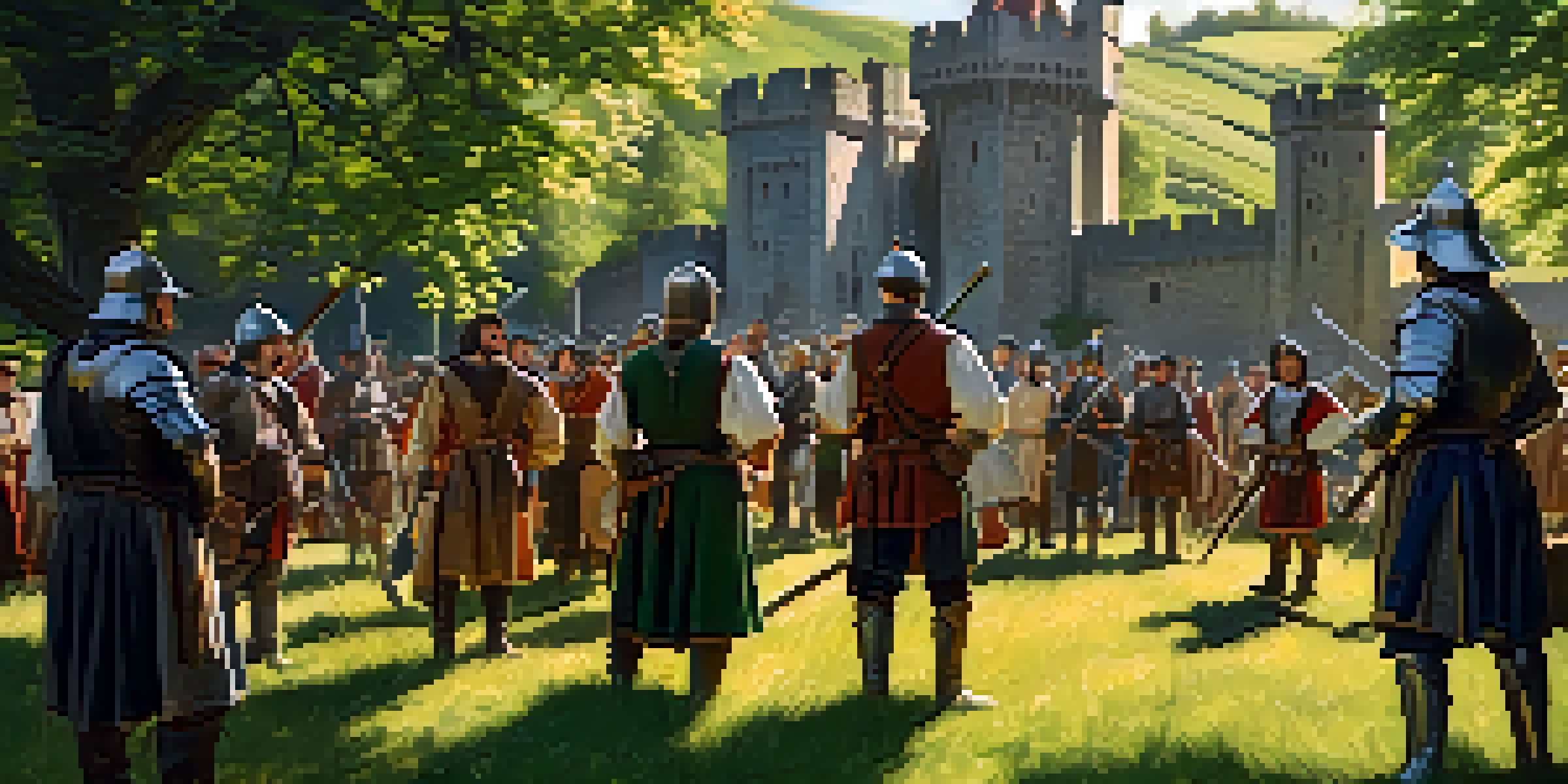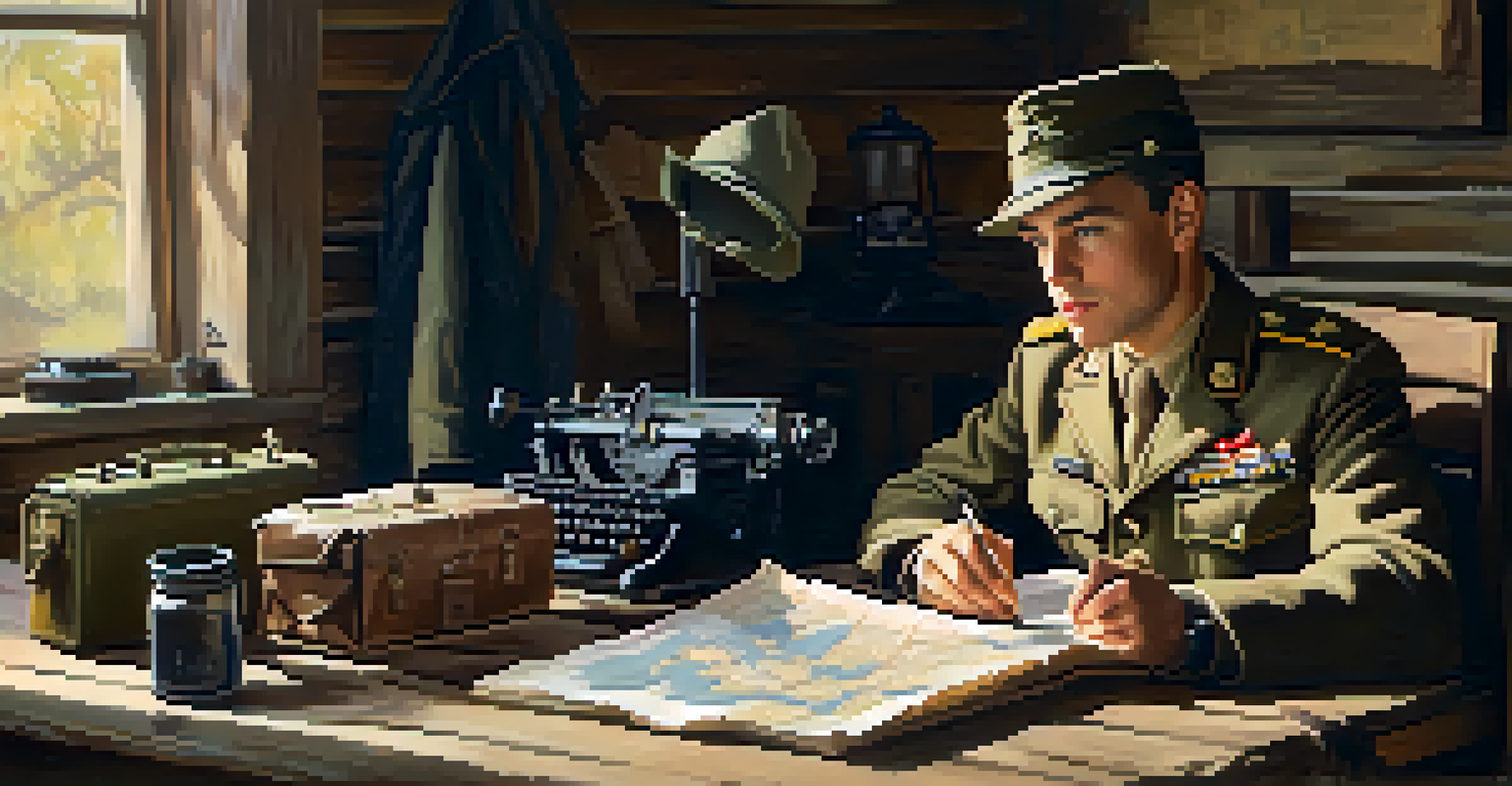Exploring the Art of Historical Reenactments: A Beginner's Guide

What Are Historical Reenactments and Why Do They Matter?
Historical reenactments are live performances that recreate specific events, often with a focus on accuracy in costumes, settings, and behaviors. They provide a unique way to experience history, allowing participants and audiences to engage with the past in a tangible manner. Whether it’s a battle, a festival, or a daily life scene, reenactments bring history to life.
History is not a burden on the memory but an illumination of the soul.
These events can vary from small-scale gatherings to large festivals that attract thousands. They serve not only as entertainment but also as educational experiences, helping people understand historical contexts and perspectives. By immersing oneself in a reenactment, participants can foster a deeper appreciation for the complexities of history.
Reenactments can also promote community involvement and teamwork, as participants often work together to create an authentic experience. They provide a platform for discussions about historical events, allowing for diverse interpretations and insights. This engagement helps to keep history alive and relevant in our modern society.
Getting Started: What You Need to Know
To dive into the world of historical reenactments, start by researching events in your area. Many groups host regular reenactments, and joining a local society can be an excellent first step. Websites, social media groups, and local libraries often provide information on upcoming events and how to participate.

Once you've found an event that interests you, consider the time period or specific event you want to reenact. This will help you focus your research and costume selection. It’s essential to understand the historical context, including the customs, clothing, and social norms of the era you wish to portray.
Engaging with History Through Reenactments
Historical reenactments allow participants to experience and appreciate the complexities of history through immersive performances.
Connecting with experienced reenactors can also be incredibly beneficial. They can offer guidance on costumes, equipment, and techniques that enhance your experience. Many reenactors are passionate about sharing their knowledge, making it easy for newcomers to learn the ropes.
Choosing Your Historical Era and Event
Selecting the right historical era is crucial for your reenactment journey. Popular choices include the medieval period, the American Civil War, and World War II, each offering unique opportunities for participation. Think about what fascinates you the most when making your choice; passion for a particular era often translates into a more enjoyable experience.
Those who cannot remember the past are condemned to repeat it.
Once you've picked an era, research specific events within that time frame. For example, if you're interested in the Civil War, you might choose to reenact a pivotal battle or a civilian experience. This focus will not only help in costume selection but also in understanding the motivations and experiences of historical figures from that period.
Consider attending events from different eras as well. This exposure can broaden your understanding of history and may even spark interests in new periods. Remember, the goal is to enjoy the journey of discovery while connecting with others who share your passion.
Essential Gear: Costumes and Props
Costumes and props are the backbone of any successful reenactment. They help create an authentic atmosphere and allow you to embody the character you portray. Start by researching what clothing and accessories were typical for your chosen era, as accuracy is key in historical reenactments.
Many reenactors choose to make their own costumes, which can be a rewarding experience. There are numerous online resources, including tutorials and pattern guides, to help you create an outfit that reflects historical accuracy. If crafting isn’t your strength, many groups offer rental options or have members who can assist with costume creation.
Importance of Accurate Costumes
Costumes and props are essential for creating an authentic atmosphere, making research into historical attire crucial for reenactors.
Props can also enhance your portrayal significantly. Consider items like weapons, tools, or household goods that were common in your chosen time period. Just be sure to check the guidelines of the event you plan to attend, as some may have specific rules regarding props and safety.
The Importance of Research in Reenactments
Research is the backbone of historical reenactments. It helps you accurately represent your character, ensuring that your portrayal is both authentic and respectful. Delve into books, documentaries, and online resources to gather information about the era's social customs, significant events, and daily life.
Engaging with primary sources, such as letters or diaries from the period, can provide personal insights that enrich your character. This depth of knowledge not only enhances your performance but also allows for more meaningful interactions with fellow reenactors and audiences.
Sharing your findings with your group can foster a collaborative learning environment. The more everyone knows about their characters and the historical context, the more engaging the overall experience will be for both participants and spectators.
Connecting with the Community: Joining Reenactment Groups
One of the most rewarding aspects of historical reenactments is the community you'll find. Joining a reenactment group can provide support, camaraderie, and a wealth of shared knowledge. These groups often organize events, workshops, and social gatherings, creating a vibrant network of history enthusiasts.
Many groups welcome newcomers with open arms, offering mentorship and guidance as you embark on your reenactment journey. This sense of belonging can be incredibly fulfilling, as you'll be surrounded by individuals who share your passion for history.
Community and Collaboration in Reenactments
Joining reenactment groups fosters a supportive community and enhances the overall experience through shared knowledge and teamwork.
Participating in group activities also allows for collaborative projects, such as planning future events or creating shared resources for costume-making. Building relationships within this community can enhance your overall reenactment experience and lead to lasting friendships.
Tips for a Successful Reenactment Experience
To ensure a successful reenactment experience, preparation is key. Arrive early to get familiar with the layout, meet fellow participants, and set up your space. Being organized helps reduce stress and allows you to focus on enjoying the event.
Stay open-minded and flexible during the event. Reenactments can be unpredictable, and being adaptable will help you navigate any surprises that arise. Engaging with the audience and fellow reenactors can lead to unexpected and enriching experiences.

Lastly, have fun! Remember that reenactments are about connecting with history and enjoying the moment. Embrace the camaraderie, learn from others, and allow yourself to be fully immersed in the experience.